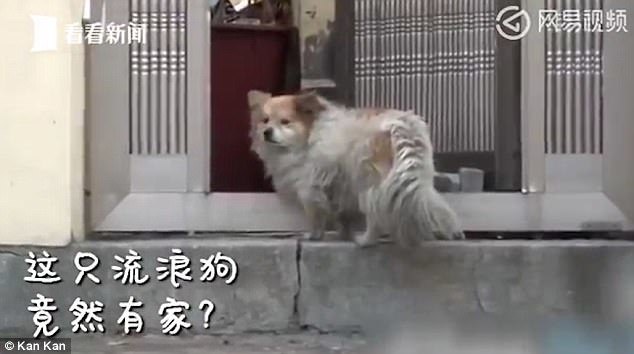A loyal little dog has touched hearts across South Korea after being featured in a story that is both sorrowful and beautiful.
For three long years, the dog patiently waited outside the door of its owner’s home, unaware that the elderly woman had been moved to a nursing facility after developing age-related dementia.
The elderly woman, who lived in the coastal city of Busan, had adopted the abandoned dog a few years prior and named him Fu Shi. As a single woman, she and Fu Shi lived peacefully together until she suddenly suffered a brain hemorrhage, which left her with memory loss.
She was hospitalized and then transferred to a nursing home for long-term care, but Fu Shi was left behind. Not understanding what had happened, the loyal dog continued to wait by the door, hoping his beloved owner would return. Thankfully, kind-hearted neighbors in the area fed and looked after Fu Shi during the three years before the media discovered his story.
Residents shared that every single day for three years, Fu Shi could be seen sitting in front of the house or waiting at the small alley nearby. At the end of each day, he would return to the now-abandoned house. He survived on food provided by the neighbors.

The story of Fu Shi—the faithful dog from Busan—has moved millions of South Koreans and was picked up by major news outlets.
After news of Fu Shi’s heartbreaking wait spread, an animal rescue charity stepped in to check on his condition. They discovered that Fu Shi was around 8 years old and suffering from some digestive issues. He received medical treatment and made a good recovery.


Following several emotional reports about him, Fu Shi was adopted by a new loving family and given a new name: Sky.
Fu Shi had waited for his owner beside the quiet, empty home for three years.
Now, he has recovered and lives safely in a new home.
Fu Shi’s unwavering loyalty reminds many of another famous dog: Hachiko, whose story has been told in books and films across the world.
In 1924, Professor Hidesaburo Ueno of the University of Tokyo adopted a little Akita puppy named Hachiko. Every morning, Hachiko would walk with his owner to Shibuya Station, and every evening, he would return to wait for him. This daily routine continued until May 1925, when Professor Ueno died unexpectedly of a heart attack at work.
Despite his owner’s death, Hachiko continued to appear at the station every evening for 9 years, 9 months, and 15 days, faithfully waiting for someone who would never return.
In 1932, a former student of Professor Ueno visited Hachiko and wrote about the dog’s extraordinary loyalty. One of these stories was published in the Asahi Shimbun, a prominent Tokyo newspaper, and touched readers across Japan.
From that moment on, people began bringing food to the station for Hachiko while he waited each day. His loyalty became a national symbol of devotion, and Hachiko turned into a beloved figure in Japanese culture.
To this day, Hachiko’s story continues to be passed down from generation to generation in Japan. Artists have sculpted statues in his honor, and his legacy lives on in books, movies, and even bus routes named after him.
Hachiko died on March 8, 1935, at the Shibuya Station where he had waited for nearly a decade. His body was preserved and is now displayed at Japan’s National Museum of Nature and Science in Ueno, Tokyo.
A bronze statue of Hachiko stands at Shibuya Station, at the very entrance where he once waited, now famously known as the Hachiko Exit.
Hachiko became the inspiration for many works in Japanese pop culture, including the 1987 film “Hachiko Monogatari” and the 2009 English-language adaptation “Hachi: A Dog’s Tale.”